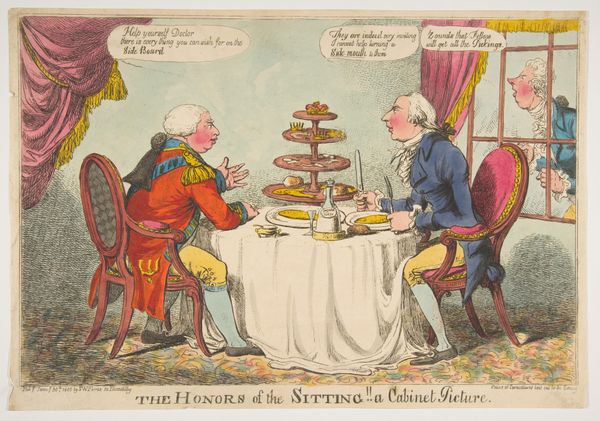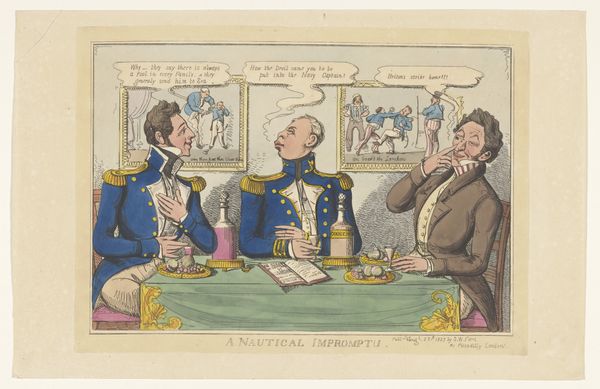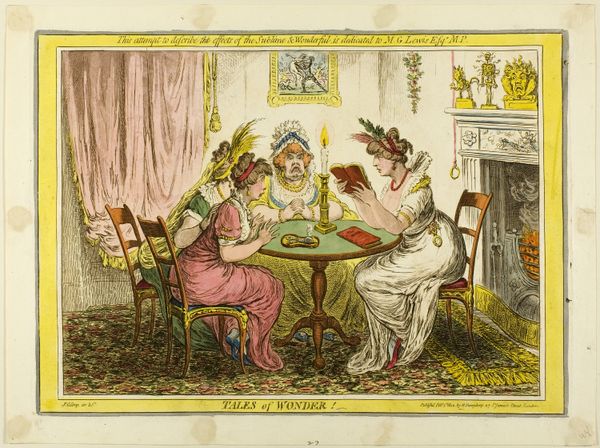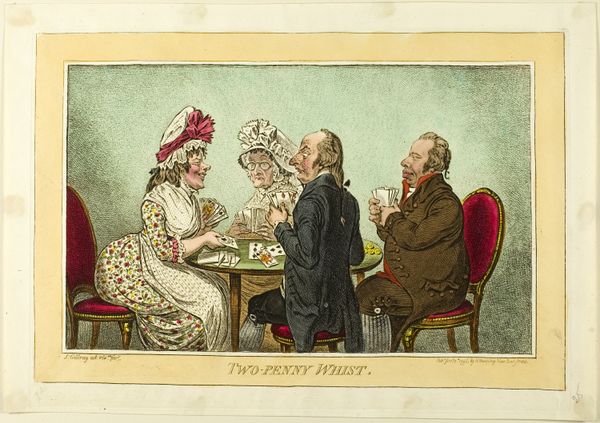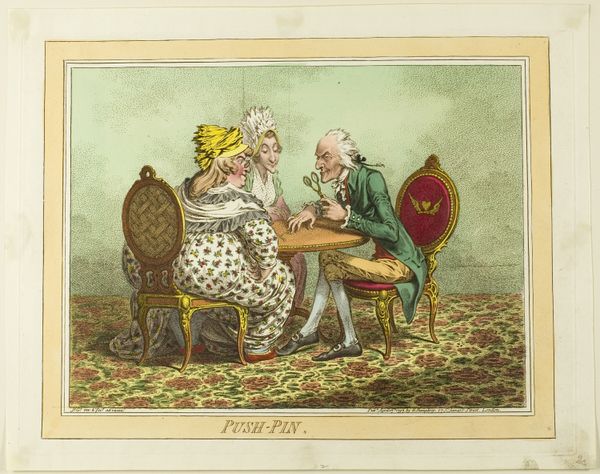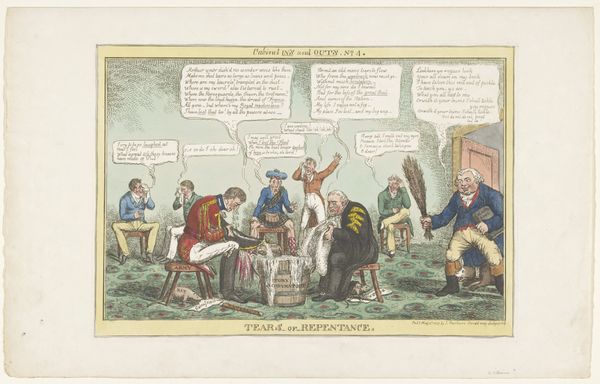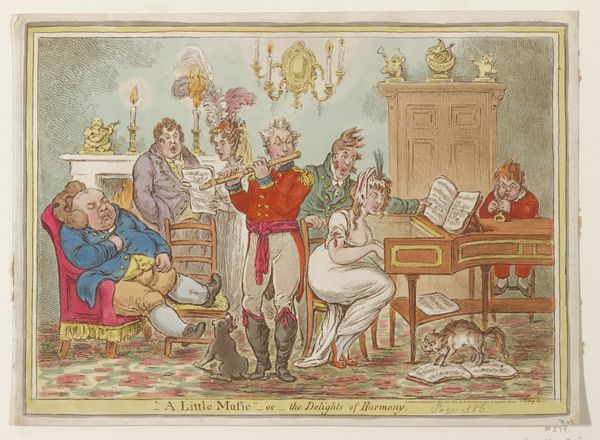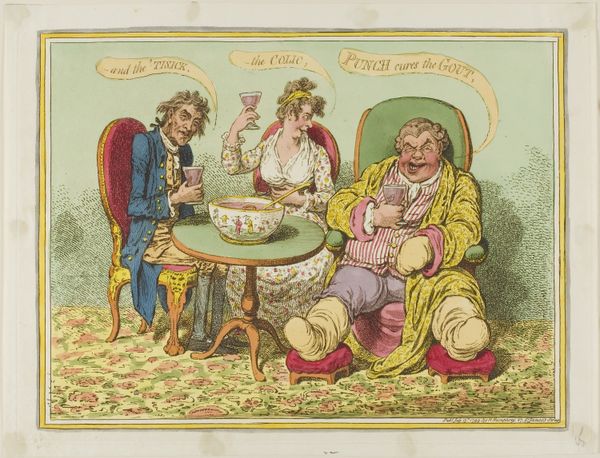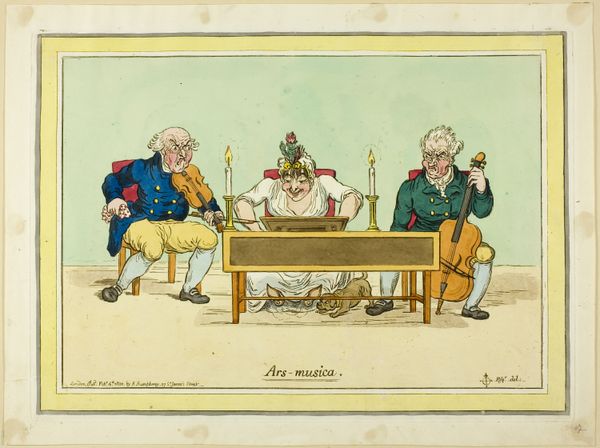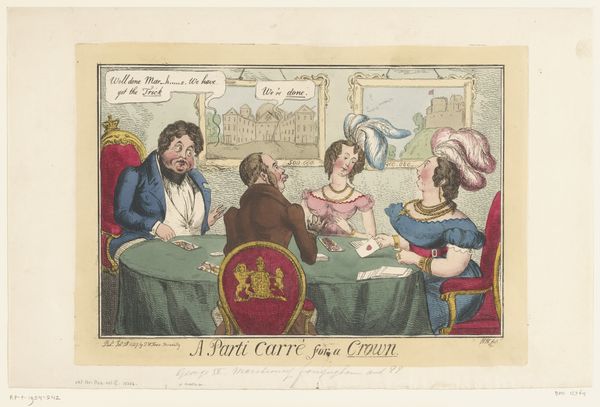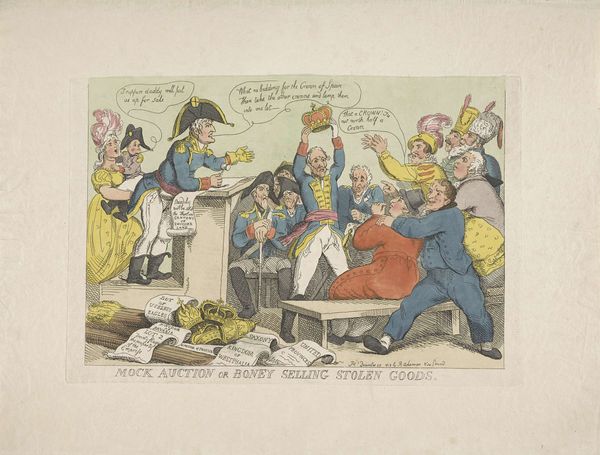
drawing, print, etching
#
drawing
# print
#
etching
#
caricature
#
romanticism
#
watercolour illustration
#
history-painting
Dimensions: plate: 8 3/8 x 10 13/16 in. (21.2 x 27.4 cm) sheet: 9 1/4 x 12 1/2 in. (23.5 x 31.7 cm)
Copyright: Public Domain
Editor: This is George Cruikshank’s "A Game of Cribbage or Boney's Last Shuffle," an etching from 1814. It's…kind of funny? The color is muted, almost like a children’s book illustration, but there’s a satirical edge. What's the story this image is trying to tell? Curator: Well, it’s not just funny; it's a potent piece of political commentary, steeped in the anxieties and power dynamics of its time. Consider the moment: 1814. Napoleon, or "Boney" as the British nicknamed him, is facing defeat. This print uses caricature to diminish him, portraying him as an opponent in a card game – a game of chance, but also strategy – with Lord Wellington. The game stands as a metaphor for the Napoleonic Wars, for the very real, violent game of nations. Editor: So, it’s a way of making a political statement? It doesn't feel very… heroic. Curator: Precisely! Notice how Cruikshank has rendered Napoleon – short, hunched, seemingly losing. Then contrast that with Wellington’s confident posture, the extravagant feather in his hat, the little dog –symbols of English loyalty and status. What’s being asserted here is a firm hierarchy, a statement about British superiority, particularly considering how revolutionary Napoleonic France was, with its emphasis on liberty, equality, fraternity! The artist seeks to reassert conservative values by ridiculing Napoleon. How might ideas of race or nation play a part, do you think, in such a rendering? Editor: That's interesting… I guess I was seeing it more literally. It definitely changes how I view it, realizing that every detail is meant to underscore a specific political agenda. Curator: Absolutely. And in analyzing such work, we also question its motives. Are they fair, ethical? Are there underlying assumptions regarding nationality and power at work in how people are portrayed? This opens the work up to a range of interesting contemporary critiques. Editor: That makes the work feel less like a relic and more like a jumping-off point to discuss present concerns, really. Curator: Exactly. By digging into these historical narratives, we shed light on our own contemporary biases.
Comments
No comments
Be the first to comment and join the conversation on the ultimate creative platform.
